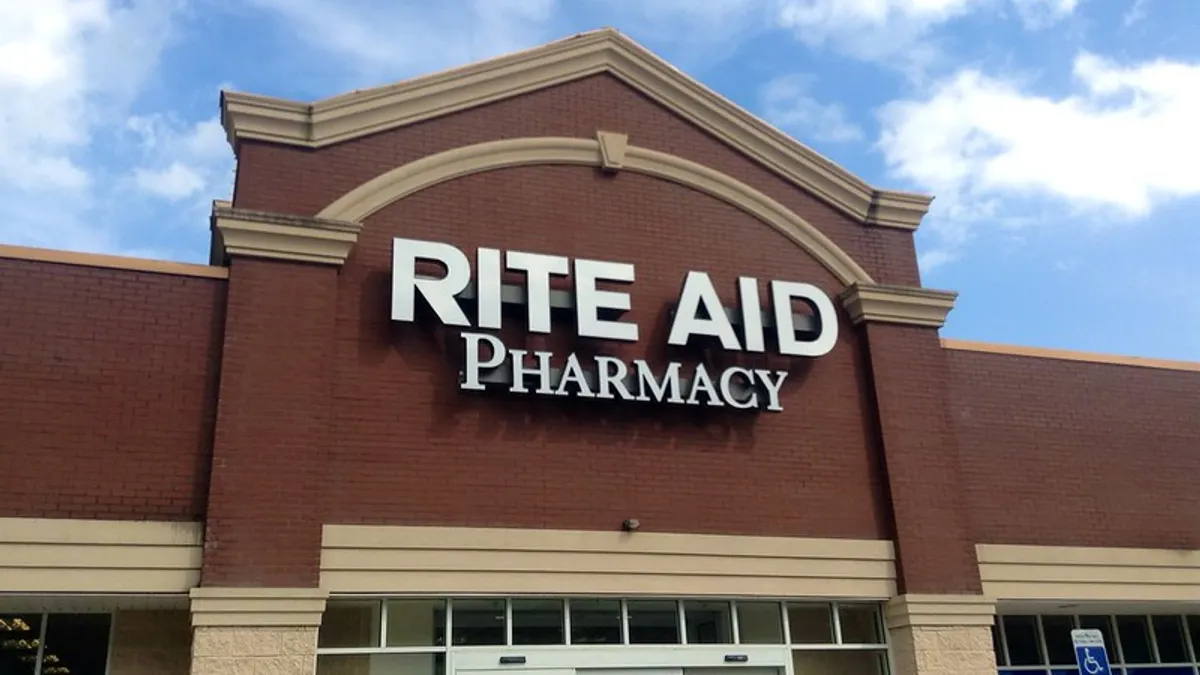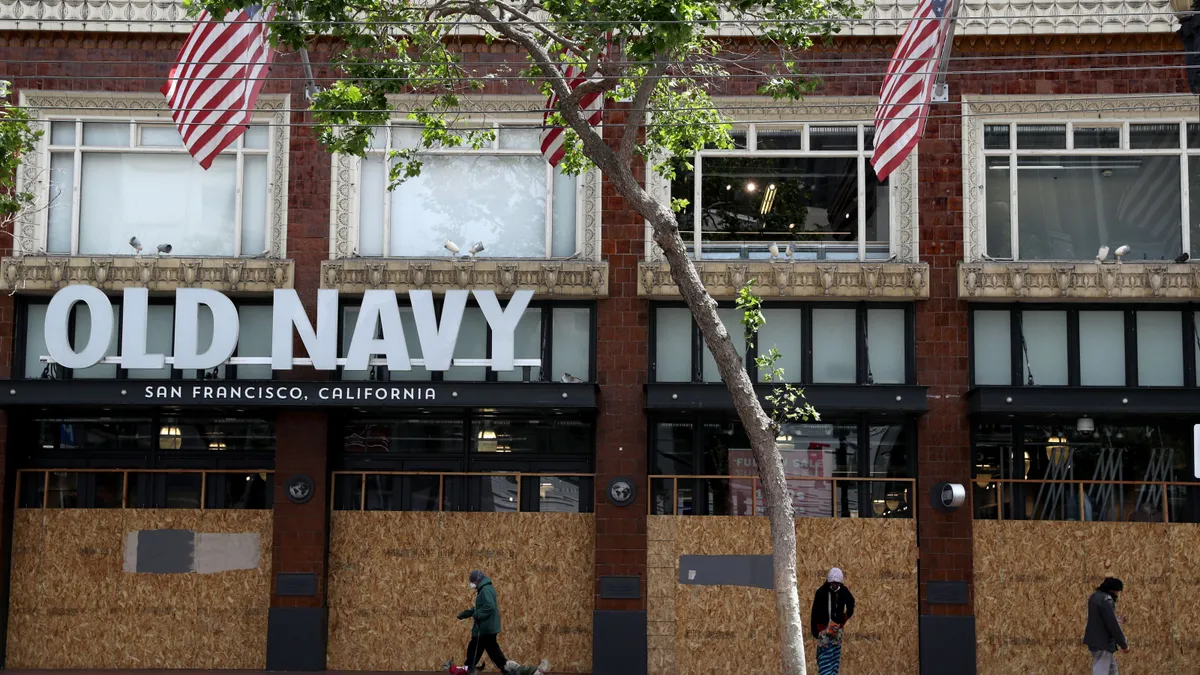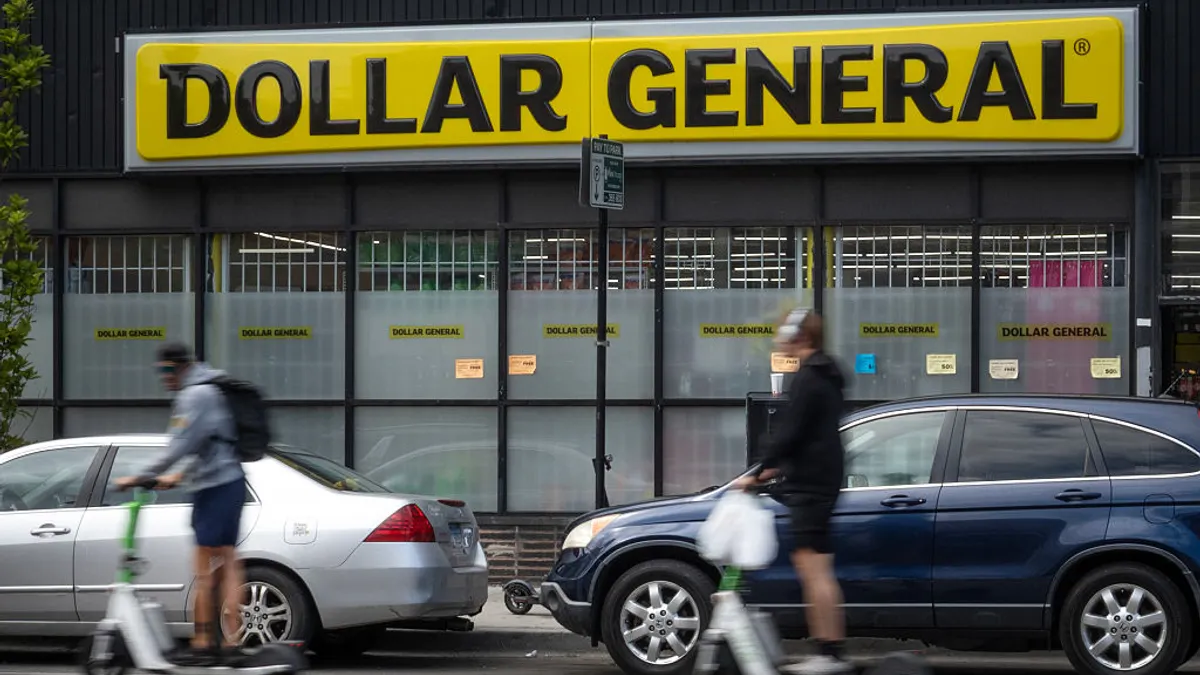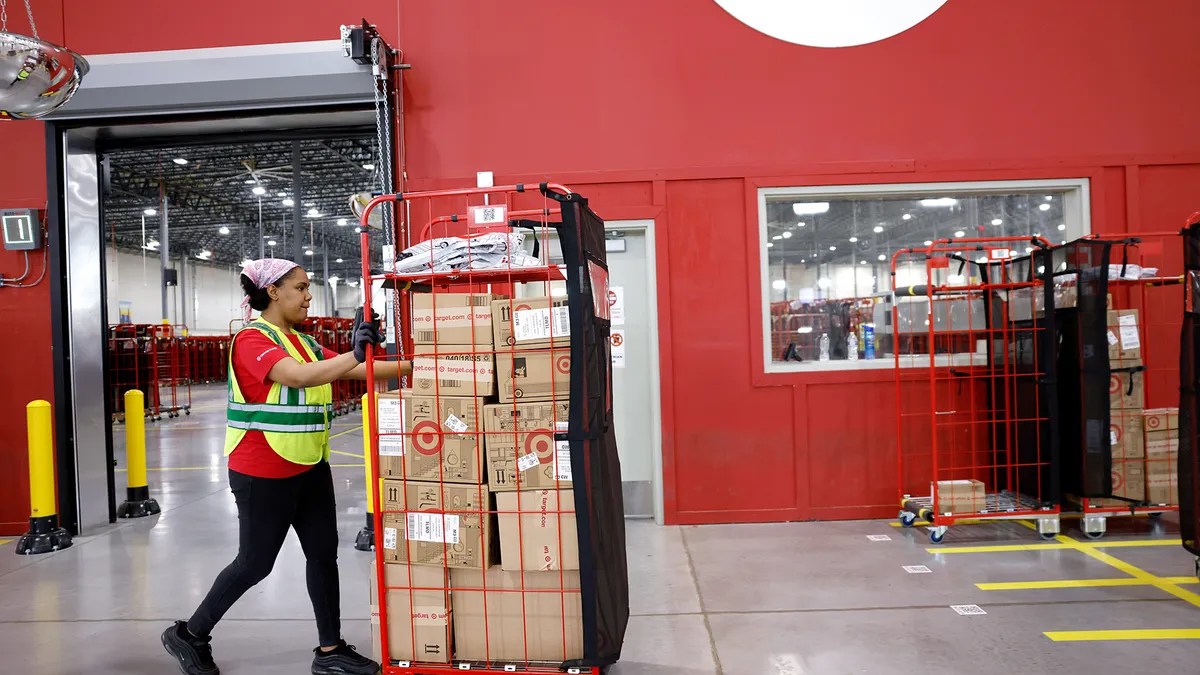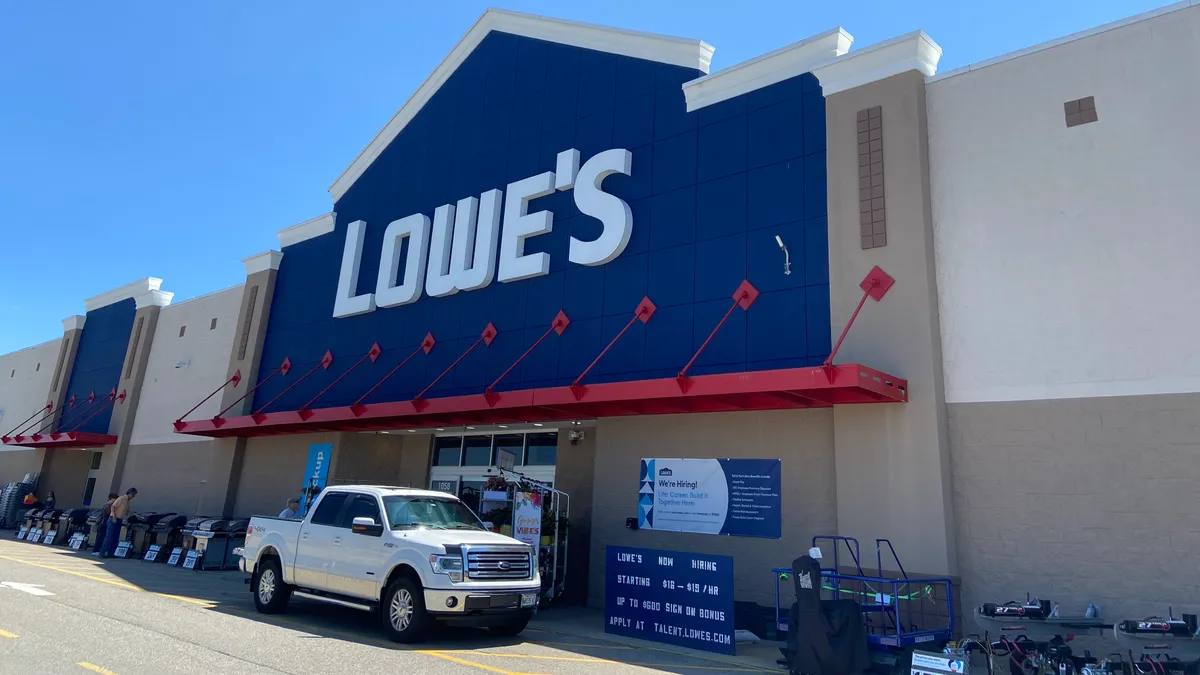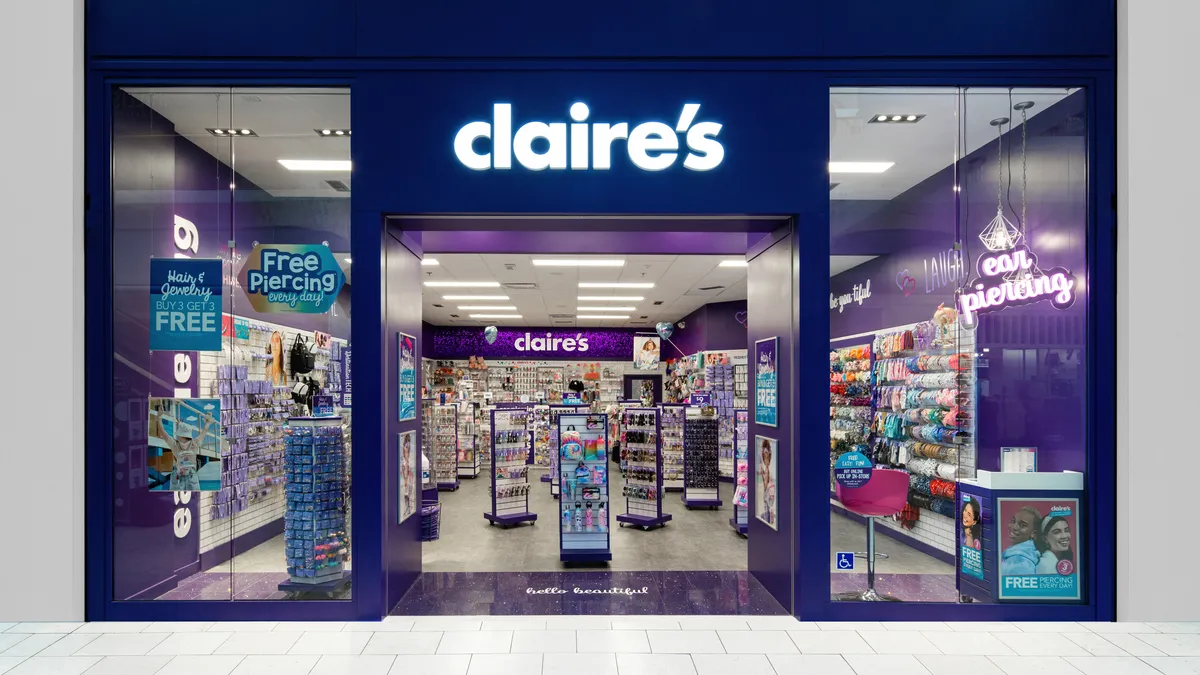For its 2023 bankruptcy, which ended last fall, Rite Aid blamed macroeconomic factors and business challenges arising from the pandemic. For its 2025 bankruptcy, which commenced Monday, the drugstore chain says its front-of-store retail operations are largely at fault.
In a letter sent to vendors this week, the company said it has “generally stopped purchasing goods and services,” except those that will get it through its latest bankruptcy.
“Rite Aid finds itself in need of chapter 11 protection because, as the Company attempted to stabilize its business post-emergence from the 2023 Cases, it experienced unforeseen challenges that significantly impaired its front-end business relative to its business plan,” the retailer told the U.S. Bankruptcy Court in the District of New Jersey this week. “Although its pharmacy-care business remained resilient, its high-margin front-end business has remained significantly impaired.”
The company, in its latest filing, describes in stark terms a confluence of factors that led it back to bankruptcy court. Many customers who would previously buy household goods at Rite Aid found those items cheaper elsewhere. Several vendors that had withheld shipments and stiffened their terms ahead of and during the earlier bankruptcy never softened those policies as promised. And the company didn’t obtain the level of financing that had been pledged, despite “assurances from certain capital providers.”
“These setbacks created a perfect storm for Rite Aid,” Marc Liebman, managing director at Alvarez & Marsal North America who is serving as the retailer’s chief transformation officer, said in court filings this week.
Overshadowing all of that is the company’s crushing debt, according to GlobalData Managing Director Neil Saunders.
“High debt levels and a lack of liquidity were always Rite Aid’s Achilles' heel,” he said by email. “The issues prevented it from doing a lot of things that it wanted to do and should have been doing.”
A changed consumer
Like many U.S. drugstores, Rite Aid sells a range of household goods in the non-pharmacy spaces, from beauty products to beer.
Since exiting bankruptcy last year, however, Rite Aid said it “faced a structural shift in its market, primarily resulting from changed customer behavior.” Its customer base includes many people on low- or fixed-incomes, who historically would purchase such items when they stopped in to pick up their prescriptions. Post-bankruptcy, though, “customer purchases of these products from brick-and-mortar convenience stores waned significantly, as Rite Aid was viewed as a higher-cost provider of these items.”
As sales volume and margins fell, Rite Aid’s liquidity problems worsened, culminating in Monday’s filing, the company said.
Broken promises, part 1
Customers may have left items on Rite Aid’s shelves, but those shelves were nevertheless increasingly empty because vendors wouldn’t fulfill orders, at least on terms the company could afford. This began in the lead-up to the 2023 bankruptcy, according to court filings.
“The lack of such inventory gave rise to a vicious cycle: high-margin front-end sales declined due to insufficient inventory, and lagging sales depleted liquidity and caused vendors to tighten trade terms even further,” Liebman said.
After that first bankruptcy concluded, however, that was supposed to change. Thanks to “extensive discussions with vendors,” the company estimated it would have $126 million in additional liquidity by February because it assumed enough suppliers would loosen those restrictive payment terms. Instead, most suppliers of non-pharmacy goods refused to ease up, and one of its largest vendors even reimposed a cash-on-delivery requirement after the bankruptcy ended.
“The company places a lot of blame on its vendors who did not relax their restrictive payment terms,” Sarah Foss, head of restructuring at Debtwire, said by email. “The strained vendor relations combined with the company being unable to obtain additional liquidity from its letter of credit facilities, lower consumer spending and increasing competition left the company with insufficient liquidity to operate its business and service its massive debt obligations.”
Broken promises, part 2
Indeed, money was tight not only because sales were down, but also because nearly $100 million in post-bankruptcy financing never came through.
In September, Rite Aid was set to emerge from its bankruptcy as a private business with about $2 billion less debt plus some $2.5 billion in exit financing. Its expectation, based on conversations with various parties, was that it would have about $166 million in liquidity from letters of credit, according to court filings this week.
But those parties “delayed and in some cases walked away from earlier assurances regarding the terms and timing of replacement facilities,” the company said. Ultimately, Rite Aid was only able to secure about $66.75 million in November, “a fraction of the amount originally contemplated in the term sheet for this facility” and “too little and too late for the Company to meet its financial projections.”
“In other words, the Company became trapped in a vicious cycle, where tightening liquidity led to empty store shelves, and vice versa,” Liebman said.
No capital, no time, but a lot of debt
Most of the retail space in major U.S. drugstores resembles a convenience store, rather than a wellness or beauty destination, and that is costing them market share in some categories. Between 2025 and 2030, for example, TD Cowen analysts expect the U.S. beauty sector to grow at a compound annual growth rate of about 5%, but the drugstore beauty market to decline from 5% last year to 3% in 2030.
Rite Aid was moving to change that, but its debt burden interfered, according to GlobalData. When the company entered bankruptcy in 2023, it had over $4 billion in funded debt and annual debt service obligations of over $200 million, and today the aggregate principal amount of funded debt obligations outstanding is at about $2.2 billion, according to Liebman’s filing.
“Rite Aid’s front of store approach was directionally correct, the problem is that it didn’t really have the capital or time to execute this properly,” Saunders said. “The result was a patchwork of older and newer stores that was not very successful. The other problem is that Rite Aid only ever got partway through the strategy. It made some stores look nicer, but did not start to shift what was sold there or how customers use them.”
The company’s very high debt levels made it impossible to tackle that and a myriad of challenges, he said.
“Rite Aid did not manage this debt properly and, eventually, interest payments became crippling, and it was borrowing money for operational purposes,” he said. “That kind of position is not sustainable. There were other things such as opioid litigation, reduced profitability on the pharmacy side, and some pressure from front of store sales softness, but these things would have been more manageable without all the debt.”



